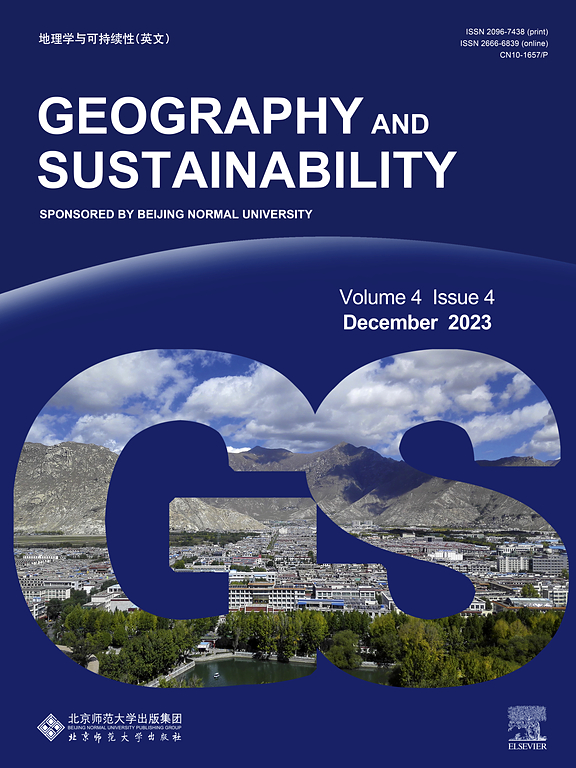Increase in global per capita cropland imbalance across countries from 1985 to 2022: A threat to achieving Sustainable Development Goals
IF 8
1区 环境科学与生态学
Q1 GEOGRAPHY, PHYSICAL
引用次数: 0
Abstract
Sustainable Development Goal 2 (SDG 2, zero hunger) highlights that global hunger and food insecurity have worsened since 2015, driven in part by growing imbalance. Addressing the challenge of achieving SDG 2 in the face of rapid global population growth requires sustained attention to global and national cropland changes. Accurately quantifying the correlation between population and cropland area (i.e., SDG 2.4.1 per capita cropland) and analyzing the trends of global cropland imbalance are essential for a comprehensive understanding of SDG 2. In this study, we utilized a new global 30 m land-cover dynamic dataset (GLC_FCS30D) to analyze cropland dynamics, quantify per capita cropland and its changes across various countries and levels of development. Our results indicate that the global cropland area expanded by 0.944 million km2 from 1985 to 2022, with an average expansion rate of 2.42 × 104 km2/yr. However, the global per capita cropland area decreased from 0.347 ha in 1985 to 0.217 ha in 2022, mainly due to a higher population increase of nearly 65 % in the same period. In the context of globalization, cropland expansion and per capita cropland exhibited spatial imbalances globally, particularly in developing countries. Developing countries saw an increase in total cropland area by 7.09 % but a significant decrease in per capita cropland area by 37.38 %. From a temporal perspective, the global imbalance has been steadily increasing with the Gini index rising from 0.895 in 1985 to 0.909 in 2022. Consequently, this study reveals an increasing imbalance of global per capita cropland across various countries, which threatens the attainment of the targets of SDG 2.

求助全文
约1分钟内获得全文
求助全文
来源期刊

Geography and Sustainability
Social Sciences-Geography, Planning and Development
CiteScore
16.70
自引率
3.10%
发文量
32
审稿时长
41 days
期刊介绍:
Geography and Sustainability serves as a central hub for interdisciplinary research and education aimed at promoting sustainable development from an integrated geography perspective. By bridging natural and human sciences, the journal fosters broader analysis and innovative thinking on global and regional sustainability issues.
Geography and Sustainability welcomes original, high-quality research articles, review articles, short communications, technical comments, perspective articles and editorials on the following themes:
Geographical Processes: Interactions with and between water, soil, atmosphere and the biosphere and their spatio-temporal variations;
Human-Environmental Systems: Interactions between humans and the environment, resilience of socio-ecological systems and vulnerability;
Ecosystem Services and Human Wellbeing: Ecosystem structure, processes, services and their linkages with human wellbeing;
Sustainable Development: Theory, practice and critical challenges in sustainable development.
 求助内容:
求助内容: 应助结果提醒方式:
应助结果提醒方式:


